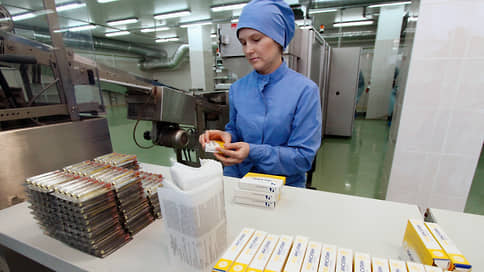In January-November 2023, budget funds were used to purchase almost 36 billion rubles worth of sugar-lowering drugs for patients with type 2 diabetes.
[ad_1]

In January-November 2023, budget funds were used to purchase almost 36 billion rubles worth of sugar-lowering drugs for patients with type 2 diabetes, which is 66% more year-on-year. Experts explain this by the regions increasing purchases in anticipation of a possible shortage of modern drugs produced by Western pharmaceutical companies, and by an increase in the number of Russians suffering from diabetes. However, even the increased volume of government purchases is still 1.4 times lower than the annual needs for glucose-lowering drugs.
In January-November 2023, regional authorities purchased non-insulin glucose-lowering drugs for the treatment of type 2 diabetes for 35.81 billion rubles, which is 66% more year-on-year, Headway Company calculated for Kommersant. Patients receive these medications free of charge from regional budgets. The federal budget, in turn, finances drug provision for diabetics with disabilities.
Analysts did not provide data on the growth of government procurement in physical terms. But experts interviewed by Kommersant, based on Headway Company calculations, also come to the conclusion that the volume of packaging purchased with budget funds has increased. Sugar-lowering drugs are included in the list of vital drugs, and maximum prices for them are set by the state. Therefore, experts say, the impact of a possible price increase on an increase in government purchases in monetary terms, for example due to serious volatility of the ruble exchange rate, “is not so obvious.”
In the past year, the segment of glucose-lowering drugs has become one of the fastest growing segments of government procurement of drugs in the market. For comparison: in January-November 2023, budget spending on the purchase of all drugs for various diseases decreased by 11.5%, to 730.4 billion rubles, AlphaRM previously calculated.
One of the reasons for the increase in government purchases of diabetes drugs is the increase in the number of Russians diagnosed with this disease. According to estimates by the Diabetes Life association, in the Russian Federation the number of diabetics increases annually by an average of 300 thousand people. According to the federal register of patients with diabetes, at the beginning of 2023, 5 million were registered at the dispensary, of which 4.58 million were with type 2 disease. The appearance of patients from new territories – LPR, DPR, Kherson and Zaporozhye regions could also have an impact, suggests Andrey Kovalev, director of the Diabetes Life association.
The Moscow Department of Health (DZM) confirmed to Kommersant that in 2023 the volume of government purchases of glucose-lowering drugs in the capital exceeded the figures for 2022. The department explained this, among other things, by the fact that such drugs have also begun to be actively prescribed to patients with chronic heart failure. The Health Department added that they had purchased drugs for 2024 in advance, “having formed the necessary irreducible supply.” According to a Kommersant source in the market, last year many regions began to purchase more of these drugs, fearing a possible shortage in the coming year.
Disruptions in the supply of a number of glucose-lowering drugs, such as Trulicity from Eli Lilly, have been observed since 2022. In addition, Novo Nordisk decided to stop supplying Ozempic, Rebelsas, Victoza, MSD – Janumet, Januvia and Stiglatra to the Russian Federation.
The increase in government purchases of glucose-lowering drugs in monetary terms may also be caused by the fact that regions are trying to purchase more modern and expensive drugs, says Nikolai Bespalov, development director at RNC Pharma. Andrey Kovalev points out that the share of purchased innovative hypoglycemic drugs in 2023 increased in monetary terms to 14% from 7% in 2022, and in Moscow and St. Petersburg – to 24%. For example, according to Headway Company, purchases of forciga from AstraZeneca increased 2.2 times – to almost 11 billion rubles, jardins from the German Boehringer Ingelheim – by 48%, to 6.3 billion rubles. Russian pharmaceutical companies have registered analogues of these drugs, but have not yet brought them to market.
Although the regions have increased spending on glucose-lowering drugs, the total volume of their purchases is still far from meeting the entire need. Previously, the Center for Expertise and Quality Control of Medical Care estimated that 52.4 billion rubles are required annually for such drugs. (see “Kommersant” dated May 5, 2022).
[ad_2]
Source link





